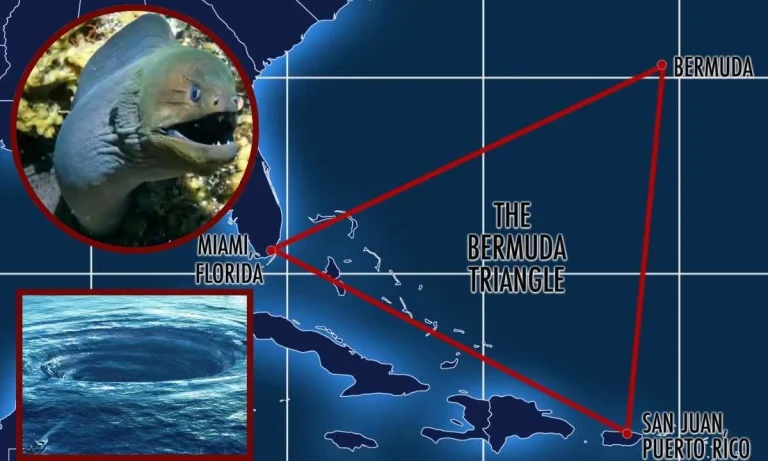The Lone Woman Stranded on the Island of the Blue Dolphins | True Story of Juana Maria!
The story of Juana Maria, the Lone Woman of San Nicolas Island, involves survival and mystery. She lived on that island utterly and completely alone for almost 18 years, with the inclement weather and lack of foodstuffs. Juana Maria’s life took off on a legendary level. She influenced books, movies, and research about exactly how she survived the desolate, small island off the California coast. Here, let us enter into the life of Juana Maria.
Who Was Juana Maria?
Juana Maria was a Nicoleño, a group of natives from San Nicolas Island. It is one of the Channel Islands in California. The Nicoleños had lived on the island for thousands of years with fishing, hunting, and gathering as their livelihood. By the early 19th century, the California coastline welcomed the first European explorers, significantly changing the lives of its people. By the 1830s, friction between the Nicoleños, Russian, and Alaskan fur traders reduced the population size on the island. So tragically, many were either killed or forced to run.


In 1835, as the Nicoleño number continued to dwindle the Mexican government, which ruled over California, decided to transport all remaining islanders back to the mainland. So, a dispatched ship had instructions to collect the islanders from San Nicolas and take them to California. However, the 24-year-old Juana Maria never managed to get on the ship. In other versions, she swims back to look for her missing child or another family member. But she finds that the ship has gone by the time she returns. The one left behind was Juana Maria, who became the last Nicoleño on the island, starting her 18-year-long isolation.


Survival on San Nicolas Island
Isolated some 60 miles off the coast of California, San Nicolas Island is a bleak and windy location. Vegetation is limited, and there are few resources on the island that would assist in survival. Adaptation to the environment was Juana Maria’s key to survival, drawing upon knowledge of Nicoleño culture. According to interpretations by archaeologists and historians, she probably constructed shelters from whalebones, driftwood, and reeds. She made crude tools from animal bones, stone, and shells, with which she hunted, fished, and gathered for her food.

Marine life around the island, like seals, shellfish, and fish, were probably her mainstays. Juana Maria would have gathered roots, edible plants, and bird eggs to supplement her diet. Since there was not much fresh water, she probably collected rainwater and conserved it for drinking. Such a feat speaks to her competency and strength in keeping herself alive under such conditions for almost nineteen years.
Rescue and Return to Civilization
In 1853, some 18 years into her solitary confinement, a fur trader named George Nidever and his crew landed on San Nicolas Island. While he was exploring the island, he found Juana Maria. She was clothed in a skirt of greenish cormorant feathers and lived alone. Juana Maria could no longer speak her native Nicoleño but managed to convey in her own way. She was happy to see other human beings after such a very long time.
Juana Maria’s San Nicolas Island Cave:
The poor condition of Juana Maria prompted George Nidever to help her to travel with him back to Santa Barbara, California. The local community welcomed her there, though they could not understand her as she spoke a language quite foreign to their ears. She was the last known Nicoleño and none understood her San Nicolas Island experience.
Unfortunately, Juana Maria did not stay in society for long. Seven weeks later, she died of some sort of disease or pneumonia-which a weak body could not resist. She died in 1853 and the Nicoleño culture died with her because she was the only known surviving member of her people.

Legacy of Juana Maria
But the sad tale of Juana Maria has lived on and on. Her life propelled Scott O’Dell’s 1960 novel Island of the Blue Dolphins, a fictionalized account of her life, to the best-selling lists. This book also won a Newbery Medal and became a classic in children’s literature, having told her story to millions of people all over the world. Her story attracts historians, anthropologists, and archaeologists alike, who study her methods of survival and the Nicoleño culture.



Artifacts found on San Nicolas Island, from the time of Juana Maria, offer a view into daily life. Stone tools, animal bone hooks, and house remains show her ingenuity in keeping herself alive against harsh conditions on the island. Interested researchers further study these about her better understanding of resourcefulness for the unique challenges that she faced.
What We Know Today
New archaeological finds on San Nicolas Island give a better view into the life of Juana Maria. Recent studies are showing that she might have been in contact with seal hunters or other visitors to the island before Nidever found her, although no concrete evidence exists. Also, researchers found remains of her shelters and tools. These further disclose her ingenuity and tenacity.
Curiously, Nicoleño’s language has been the object of study by linguists and historians, even though there are no records of her tongue. The scholars believe her language was part of the Uto-Aztecan language family which other tribes in Southern California used. At the same time, all attempts to reconstruct her language lost forever upon her death.
Juana Maria’s legacy also speaks to the consequences of European colonization on indigenous people. Her story speaks to the cultural loss and strife that Native Americans went through during this period. By looking into Juana Maria’s life, one sees a glimpse of people who actually coexisted with nature and forced them to face overwhelming changes due to outside influences.
Juana Maria’s Surviving Possessions:
Conclusion
The story of Juana Maria, the Lone Woman of San Nicolas Island, is a story of resilience, survival, and loss. Her life is a living testimony to the indomitable spirit of human beings faced by isolation and adverse circumstances. It brings to the limelight a number of highly developed cultures long before the arrival of European influence and what such native peoples went through. Even today, the story of Juana Maria thrives, attracting the minds of readers, researchers, and those intrigued by survival and determination stories.
The experiences of Juana Maria on San Nicolas Island continue to intrigue and enlighten us. It is through her legacy that we have learned of both her bravery and the culture and history of the Nicoleño people. As scholars continue to discover more detail, the story of the sole woman on the Island of the Blue Dolphins relates to all the stories of the indomitable spirit of humanity.
Also read,






















